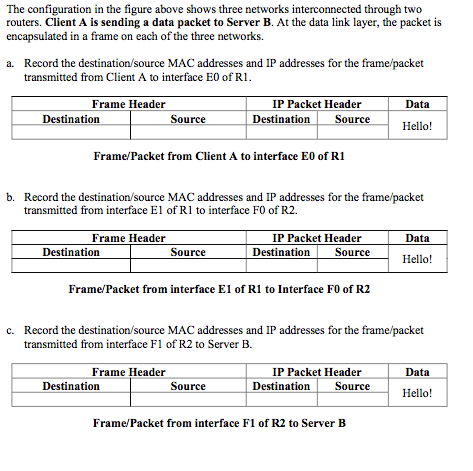

PSH-Indicates that data should be passed to the application as soon as possible. URG-Indicates that some urgent data has been placed.ĪCK-Indicates that acknowledgement number is valid.
Flags field (6 bits) contains the various flags:. This information is needed because the Options field has variable length, so the header length is variable too. Header Length) field (variable length) tells how many 32-bit words are contained in the TCP header. Note that the sequence number refers to the stream flowing in the same direction as the segment, while the acknowledgement number refers to the stream flowing in the opposite direction from the segment. Acknowledgement Number field (32 bits) contains the value of the next sequence number that the sender of the segment is expecting to receive, if the ACK control bit is set. Under certain circumstances, it can also be used to identify an initial sequence number to be used in the upcoming transmission. Sequence Number field (32 bits) specifies the number assigned to the first byte of data in the current message. The TCP packet format consists of these fields: TCP can also support numerous simultaneous upper-layer conversations. Sequence numbers identify bytes within that stream. It moves data in a continuous, unstructured byte stream. TCP is a connection-oriented Layer 4 protocol that provides full-duplex, acknowledged, and flow-controlled service to upper-layer protocols. Again,UDP is a much simpler protocol than TCP and is useful in situations where the reliability mechanisms of TCP are not necessary. UDP requires no notification of receipt and does not use the three-way handshake (SYN-ACK-ACK-which we’ll discuss in more detail a bit later). The sending application sends the packets to a peer application on the receiving host. UDP takes the message received from the layers above it on the OSI model and formats that message into UDP packets. Checksum field (16 bits) allows packet integrity checking (optional). Length field (16 bits) specifies the length of the header and data.  Source Port and Destination Port fields (16 bits each) identify the end points of the connection. The UDP packet format contains four fields:
Source Port and Destination Port fields (16 bits each) identify the end points of the connection. The UDP packet format contains four fields: 
UDP is the transport protocol for several well-known application-layer protocols, including Network File System (NFS-UDP ports 1021/1022), Simple Network Management Protocol (SNMP-UDPports 161/162), Domain Name System (DNS-UDP port 53), and Trivial File Transfer Protocol (TFTP-UDP port 69). UDP is useful when TCP would be too complex, too slow, or just unnecessary. Unlike TCP, UDP packets can be discarded before reaching their targets. UDP provides users with TCP-like services. UDP is useful in situations where the reliability mechanisms of TCP are not necessary, such as in cases where a higher-layer protocol might provide error and flow control. Because of its simplicity, UDP headers contain fewer bytes and consume less network overhead than TCP. UDP is a connectionless protocol that contains no reliability, flow-control, or error-recovery functions. With network protocols such as UDP and TCP/IP, the packets range from 64 to 1,500 characters, or bytes.
TCP (Transmission Control Protocol), which is documented in RFC 793. UDP (User Datagram Protocol), which is documented in RFC 768. The Transport Layer of your network (OSI Layer 4) will typically utilize two major protocols to move information: "There's no need to fear the OSI model" "Use the OSI reference model to aid in topology decisions" 
The following two articles can help you gain a stronger grasp of networking terms and concepts by using the OSI reference model as a guide: Understanding networks using the OSI reference model We’ll also discuss some common packet errors and their typical causes. Today, we’ll examine the anatomy of the three most common types of TCP/IP packets that travel across most wires (or glass, if you have fiber-optic cable). Administrators and engineers who are troubleshooting and analyzing networks sometimes need to break out a protocol analyzer to open up these packets and take a closer look at their contents to see what’s happening on the network. The packets then travel around the building or around the world and are unbundled by another node on the network. One of the key features of networking is the bundling of data into packets.








 0 kommentar(er)
0 kommentar(er)
